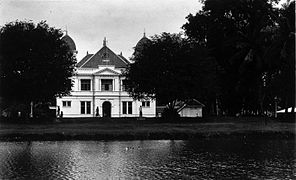
Medan is the capital and largest city of the Indonesian province of North Sumatra. The nearby Strait of Malacca, Port of Belawan, and Kualanamu International Airport make Medan a regional hub and multicultural metropolis, acting as a financial centre for Sumatra and a gateway to the western part of Indonesia. About 60% of the economy in North Sumatra is backed by trading, agriculture, and processing industries, including exports from its 4 million acres of palm oil plantations. The National Development Planning Agency listed Medan as one of the four main central cities in Indonesia, alongside Jakarta, Surabaya, and Makassar.

The Nederlandsch-Indische Handelsbank was a Dutch bank established in 1863 to finance trade between the Netherlands and the Dutch East Indies. During most of the colonial period, it was the second-largest of the “big three” commercial banks, behind the Netherlands Trading Company and ahead of the Nederlandsch-Indische Escompto Maatschappij, that dominated the Dutch East Indies’ financial system alongside the note-issuing Bank of Java.
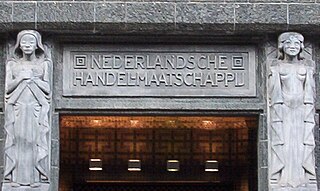
The Netherlands Trading Society was a Dutch trading and financial company, established in 1824, in The Hague by King William I to promote and develop trade, shipping and agriculture. For the next 140 years the NHM developed a large international branch network and increasingly engaged in banking operations. In 1964, it merged with Twentsche Bank to form Algemene Bank Nederland, itself a predecessor of ABN AMRO.

Eduard Cuypers was a Dutch architect. He worked in Amsterdam and the Dutch East Indies.
Herman Thomas Karsten was a Dutch engineer who gave major contributions to architecture and town planning in Indonesia during Dutch colonial rule. Most significantly he integrated the practice of colonial urban environment with native elements; a radical approach to spatial planning for Indonesia at the time. He introduced a neighborhood plan for all ethnic groups in Semarang, built public markets in Yogyakarta and Surakarta, and a city square in the capital Batavia. Between 1915 and 1941 he was given responsibility for planning 12 out of 19 municipalities in Java, 3 out of 9 towns in Sumatra and a town in Kalimantan. He received official recognition from both the government through his appointment to the colony's major Town Planning Committee and by the academic community with his appointment to the position of Lecturer for Town Planning at the School of Engineering at Bandung. He died in an internment camp near Bandung in 1945 during the Japanese occupation of the Dutch East Indies.
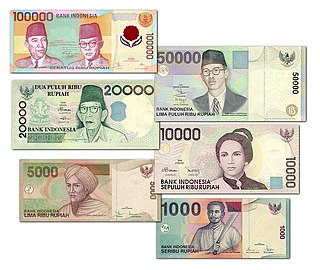
The first banknotes used in the archipelago that would become Indonesia were those issued by the United East India Company, credit letters of the rijksdaalder dating between 1783 and 1811. Netherlands Indies gulden government credit paper followed in 1815, and from 1827 to 1842 and again from 1866 to 1948 gulden notes of De Javasche Bank. Lower denominations were issued by the government in 1919–1920 and in 1939–1940 due to wartime metal shortages, but otherwise day-to-day transactions were conducted using coinage.

The colonial architecture of Indonesia refers to the buildings that were created across Indonesia during the Dutch colonial period, during that time, this region was known as the Dutch East Indies. These types of colonial era structures are more prevalent in Java and Sumatra, as those islands were considered more economically significant during the Dutch imperial period. As a result of this, there is a large number of well preserved colonial era buildings that are still densely concentrated within Indonesian cities in Java and Sumatra to this day.

The currency of Indonesia, the rupiah, has a long history dating back to its colonial period. Due to periods of economic uncertainty and high inflation, the currency has been re-valued several times.
Djaoeh Dimata is a 1948 film from what is now Indonesia written and directed by Andjar Asmara for the South Pacific Film Corporation (SPFC). Starring Ratna Asmara and Ali Joego, it follows a woman who moves to Jakarta to find work after her husband is blinded in an accident. SPFC's first production, Djaoeh Dimata took two to three months to film and cost almost 130,000 gulden.
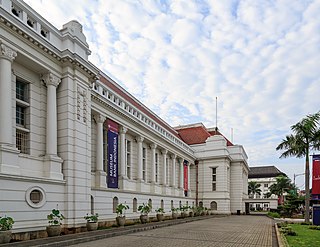
Bank Indonesia Museum, also called in English officially as BI Museum, is a bank museum located in Jakarta, Indonesia. It was founded by Bank Indonesia and opened on 21 July 2009. The museum is housed in a heritage building in Jakarta Old Town that had been the first headquarters of the Netherlands Indies gulden, the central bank of the Dutch East Indies. The bank was nationalized as Bank Indonesia in 1953, after Indonesia gained its independence. It is located next to Mandiri Museum.

Bank Indonesia Museum is a bank museum located in Surabaya, Indonesia. It was officially founded by Bank Indonesia and was opened on 27 January 2012 after its restoration. The museum occupies a building formerly known as De Javasche Bank, the central bank of Dutch East Indies. After the Indonesian Independence the building continued to function as the Bank Indonesia's branch in Surabaya until 1973. The museum is closed on Monday and public holidays. It has no entrance fee.

The Ministry of Finance is an Indonesian government ministry responsible for the nation's finance and state assets. The finance minister is responsible to the President. The ministry's motto is Nagara Dana Rakça, which means "guardian of state finance".

The Bank of Java was a note-issuing bank in the Dutch East Indies, founded in 1828, and nationalized in 1951 by the government of Indonesia to become the newly independent country’s central bank, later renamed Bank Indonesia. For more than a century, the Bank of Java was the central institution of the Dutch East Indies’ financial system, alongside the “big three” commercial banks. It was both a note-issuing bank and a commercial bank.
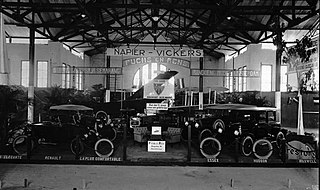
F.J. Fuchs was a harness, saddle, buggy, horse, carriage, tire and automobile supply business headquartered in Batavia, Dutch East Indies with shops and garages in various cities in Java and in Medan, Sumatra. The company became known as Fuchs en Rens. It rented and eventually sold horses, carriages, cattle and motor cars as well as offering maintenance and repair services at various garages and workshops. Fuchs & Rens was Batavia's main supplier of cars and tires and left a legacy of buildings in various Indonesian cities. Two of the company's three buildings in the western part of Tanah Abang were demolished in the 21st century to make way for a restaurant.
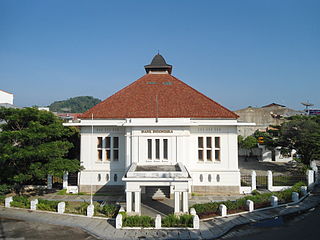
Bank Indonesia Museum of Padang is a former bank building located in Padang, Indonesia. The building was built on March 31, 1921 as the Padang branch office of De Javasche Bank before it was taken over by Bank Indonesia on July 1, 1953.
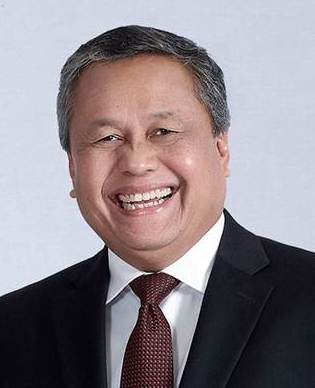
Perry Warjiyo is the current Governor of Bank Indonesia, Indonesia's central Bank. His nomination for the post of Governor was approved by the Indonesian parliament on 28 March 2018. He was sworn into office on 24 May 2018, succeeding the previous Governor Agus Martowardojo.

Abdul Hakim Harahap was an Indonesian politician who held various positions, including deputy prime minister, in the 1950s.

The Nederlandsch-Indische Escompto Maatschappij was a significant Dutch bank, founded in 1857 in Batavia, Dutch East Indies. In the first half of the 20th century, it was the smallest of the “big three” commercial banks, behind the Netherlands Trading Society and the Nederlandsch-Indische Handelsbank, that dominated the Dutch East Indies’ financial system alongside the note-issuing Bank of Java.














